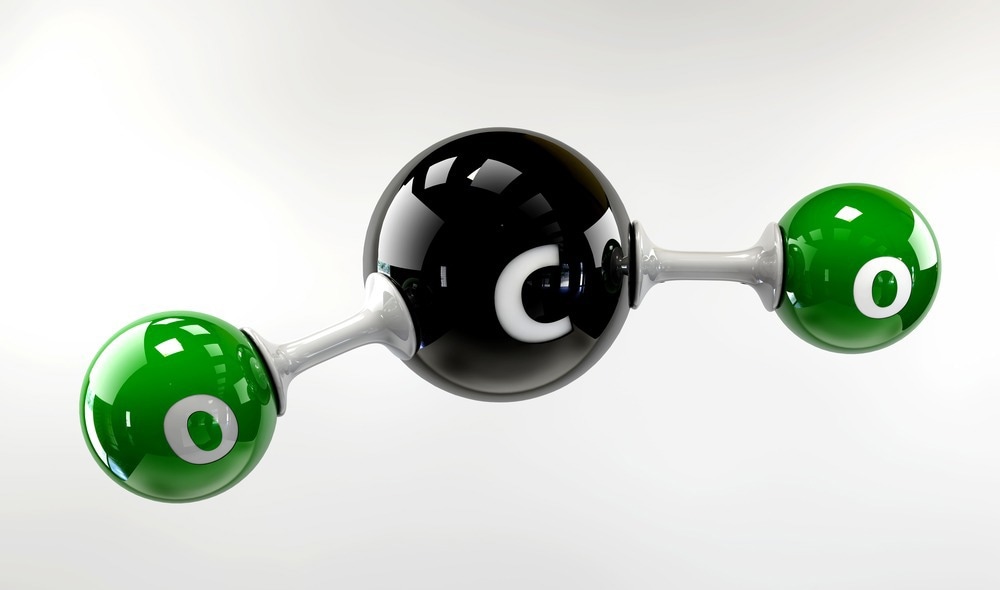Renewable electricity-driven carbon dioxide (CO2) electrolysis can transform CO2 into valuable chemicals and fuels. Nevertheless, one of the main difficulties hampering CO2 electrolysis in the direction of practical application is the extreme carbon loss in neutral and alkaline conditions, which leads to low CO2 utilization efficiency (<50%).

Image Credit: Victor Josan/Shutterstock.com
A study group headed by Profs. Xinhe Bao, Guoxiong Wang, and Dunfeng Gao from the Dalian Institute of Chemical Physics (DICP) of the Chinese Academy of Sciences (CAS) has suggested a new strategy for energy- and carbon-efficient acidic CO2 electrolysis.
The study was published in Energy & Environmental Science on February 23rd, 2023.
The scientists adjusted the microenvironments (local concentrations of K+, H+, and CO2) of the Ni-N-C cathode catalyst by altering input CO2 pressure and anolyte composition in an acid membrane electrode assembly (MEA) electrolyzer.
Using customized catalyst microenvironments, researchers achieved acidic CO2 electrolysis to CO with high energy efficiency and high CO2 utilization efficiency at current industrial densities.
At 500 mA cm-2, they achieved CO Faradaic efficiency as maximum as 95% in optimal reaction conditions, and the equivalent total cell energy efficiency was 39%. Compared with alkaline electrolysis, the CO2 loss was decreased by 86%, and the single-pass CO2 utilization efficiency was as high as 85%.
Furthermore, they have shown that the co-existence of K+ and H+ played a significant role in stabilizing the initial *CO2 intermediate, which leads to increased CO formation with theoretical calculation findings.
They also arranged an acid/alkaline tandem CO2 electrolysis system, establishing carbon-efficient CO2 conversion to multicarbon products (C2+) through a CO2-CO-C2+ route.
“This work provides new insights into tuning catalyst microenvironments for carbon-efficient CO2 electrolysis towards practical application,” concluded Prof. Wang.
Journal Reference:
Li, H., et al. (2023). Tailoring acidic microenvironments for carbon-efficient CO2 electrolysis over a Ni–N–C catalyst in a membrane electrode assembly electrolyzer. Energy & Environmental Science. doi.org/10.1039/d2ee03482d.